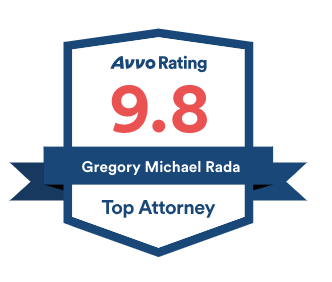VA to Amend Rating Criteria for PTSD and Other Mental Disorders
Posted by Gregory M. Rada | February 16, 2022 | Firm News
The VA announced that it is beginning the process of amending its rating criteria for PTSD and other mental disorders. These changes are currently in the proposal stage and are subject to change before they are finalized in the following months.
Why is VA Revising the Rating Criteria for Mental Disorders?
The VA continuously revises the rating schedule so that rating criteria are consistent with up-to-date medical knowledge. Per VA: “As the understanding of mental disorders has advanced, so has the ability to recognize and quantify the components that form both the diagnosis as well as its attendant disability. Therefore, VA proposes to update the section of the rating schedule that addresses mental disorders to provide clear, consistent, and accurate evaluation criteria. Updating the General Rating Formula for Mental Disorders will also improve the timeliness and accuracy of adjudications by providing uniform objective criteria based on modern medical science.”
The last time VA amended the rating criteria for PTSD and other mental disorders was in 1996. The VA states the new rating criteria will “measure a veteran’s essential ability to participate in the work environment and the impact of the mental disorder on earning capacity via a comprehensive assessment of occupational and social functioning.”
How do the New Rating Criteria Work?
The VA will assign ratings for mental conditions based on how the condition impacts the following five domains: (1) cognition, (2) interpersonal interactions and relationships, (3) task completion and life activities, (4) navigating environments, and (5) self-care.
The domain of cognition will assess a veteran’s ability to gain knowledge and comprehend things and includes areas such as memory, concentration, attention, goal setting, speed of processing information, planning, organizing, prioritizing, problem solving, judgment, decision making, or flexibility in adapting when appropriate.
The domain of interpersonal interactions and relationships will look at a veteran’s ability to effectively interact with other people in both social and occupational settings and participate in society and includes both informal (social, associational, etc.) and formal (coworkers, supervisors, etc.) relationships.
The domain of task completion and life activities will assess a veteran’s ability to manage task-related demands in activities such as vocational (work), educational, domestic chores, social, or caregiving.
The domain of navigating environments will assess a veteran’s physical and mental ability to go from place to place such as leaving the home, being in confined or crowded spaces, independently moving in surroundings, navigating new environments, driving, or using public transportation.
Finally, the domain of self-care would assess a veteran’s ability to take care of themselves such as hygiene, dressing appropriately, or nourishment.
VA will assess intensity of each domain as being none, mild, moderate, severe, or total, which they will define as:
- None — “No difficulties” associated with the domain;
-
Mild —“Slight difficulties in one or more aspects” of the domain that “do not interfere with tasks, activities, or relationships;”
-
Moderate —“Clinically significant difficulties in one or more aspects” of the domain “that interfere with tasks, activities, or relationships;”
-
Severe —“Serious difficulties in one or more aspects” of the domain “that interfere with tasks, activities, or relationships;”
-
Total —“Profound difficulties in one or more aspects” of the domain “that cannot be managed or remediated; incapable of even the most basic tasks within one or more aspects” of the domain; “difficulties that completely interfere with tasks, activities, or relationships.”
Next, VA will assess the frequency of impairment. This refers to the percentage of time, in the past month, that impairment occurs. VA will either assess frequency as “occurring less than 25% of the time over the past month” or “occurring 25% of the time or more over the past month.
VA will then take the intensity and frequency to generate a numerical value ranging from 0 to 4, which will be defined as:
- 0 = None — No difficulties;”
- 1 = Mild impairment at any frequency; or moderate impairment that occurs less than 25% of the time;
- 2 = Moderate impairment that occurs 25% or more of the time; or severe impairment that occurs less than 25% of the time;
- 3 = Severe impairment that occurs 25% or more of the time; or total impairment that occurs less than 25% of the time;” and
- 4 = Total impairment that occurs 25% or more of the time.
Finally, VA will use those numerical values to assign a rating for a mental condition as follows:
- 100% rating – Numerical value 4 in one or more domains, or 3 in two or more domains;
- 70% rating – Numerical value 3 in one domain, or 2 in two or more domains;
- 50% rating – Numerical value 2 in one domain;
- 30% rating – Numerical value 1 in two or more domains;
- 10% rating – Minimum rating.
Will these Changes Impact my Current Rating?
No. The new rating schedule will only apply to new claims and increased rating claims (and only after these proposed changes are finalized which is going to at least be months from the date of this post). Your current rating will stay as it is until/if you file a new claim for increased rating for your mental condition.
Is there Anything Else I Should Know about the New Rating Criteria?
There will no longer be 0% ratings for mental disorders. If you have a service-connected mental condition, you will be entitled to a minimum 10% rating. This is an improvement because under the old criteria, VA was allowed to assign 0% ratings.
A new note in the schedule will “instruct adjudicators not to assign individual disability ratings to more than one mental disorder given the likelihood of comorbid mental disorders and the prevalence of overlapping symptoms among such disorders.” This means no separate ratings for multiple mental conditions.
Another note states that ratings will “consider any ameliorating effects of medications prescribed for a mental disorder.” This means VA will only consider psychiatric symptoms that exist after the ameliorative effects of medication are taken into account. VA will instruct adjudicators to not rate a mental condition based on “speculation of how severe a veteran’s disability might be if he or she were not taking medication.”
Eating disorders will no longer have their own separate rating criteria and instead will be assessed the same as any other mental health condition.
VA did a proof-of-concept study showing more veterans would receive a 100% rating under the new criteria compared to the old criteria. This is likely because the old criteria required “total social and occupational impairment” in order to get a 100% rating which meant a veteran had to be unable to work and unable to maintain any social relationships. That requirement is now gone so I’m hopeful VA is correct that more veterans will qualify for a 100% rating under the new criteria.
Contact Me Today
If you have questions about whether you should have a higher rating for your psychiatric condition, schedule a free consultation or call me 844-838-7529 to learn more about your options.







